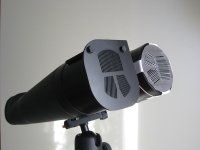new_mexico_birder
Member
I recently bought some used Sightron 8x32 binoculars off of eBay. I own a few pairs of binoculars and am not an expert but am not unfamiliar with them either.
I immediately noticed that image through the binos was weird. Blurry isn’t the right word for it - almost double vision but not that extreme. But I can never get it looking right. The diopter is set right for me. Not sure what else to check. I’ve never experienced binoculars with a collimation error but from what I can tell that’s what I’ve got with these.
I don’t want to bug the seller about sending me malfunctioning binoculars if this is user error. What are some things I can do to check and see if this is a collimation problem?
I immediately noticed that image through the binos was weird. Blurry isn’t the right word for it - almost double vision but not that extreme. But I can never get it looking right. The diopter is set right for me. Not sure what else to check. I’ve never experienced binoculars with a collimation error but from what I can tell that’s what I’ve got with these.
I don’t want to bug the seller about sending me malfunctioning binoculars if this is user error. What are some things I can do to check and see if this is a collimation problem?







